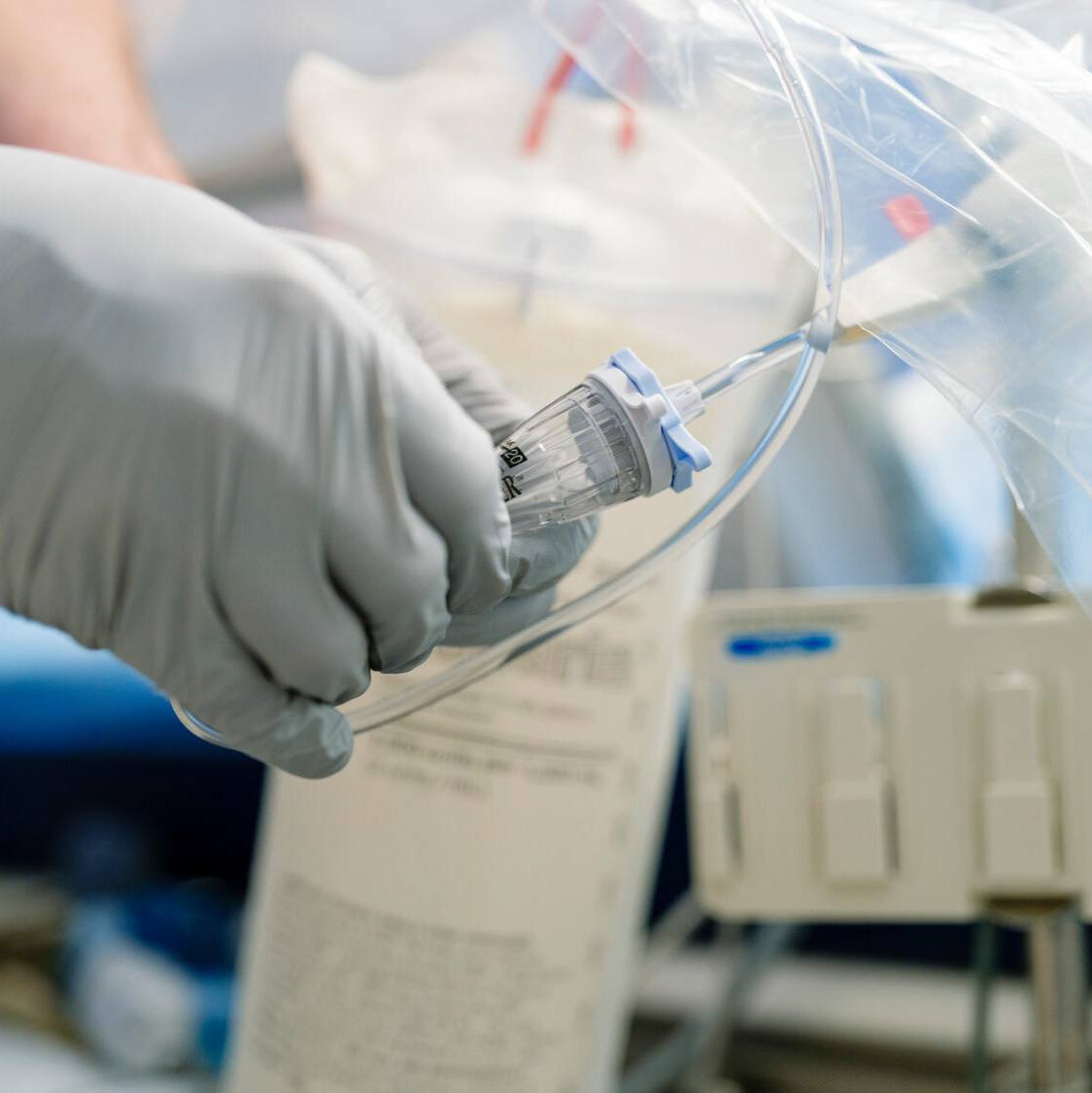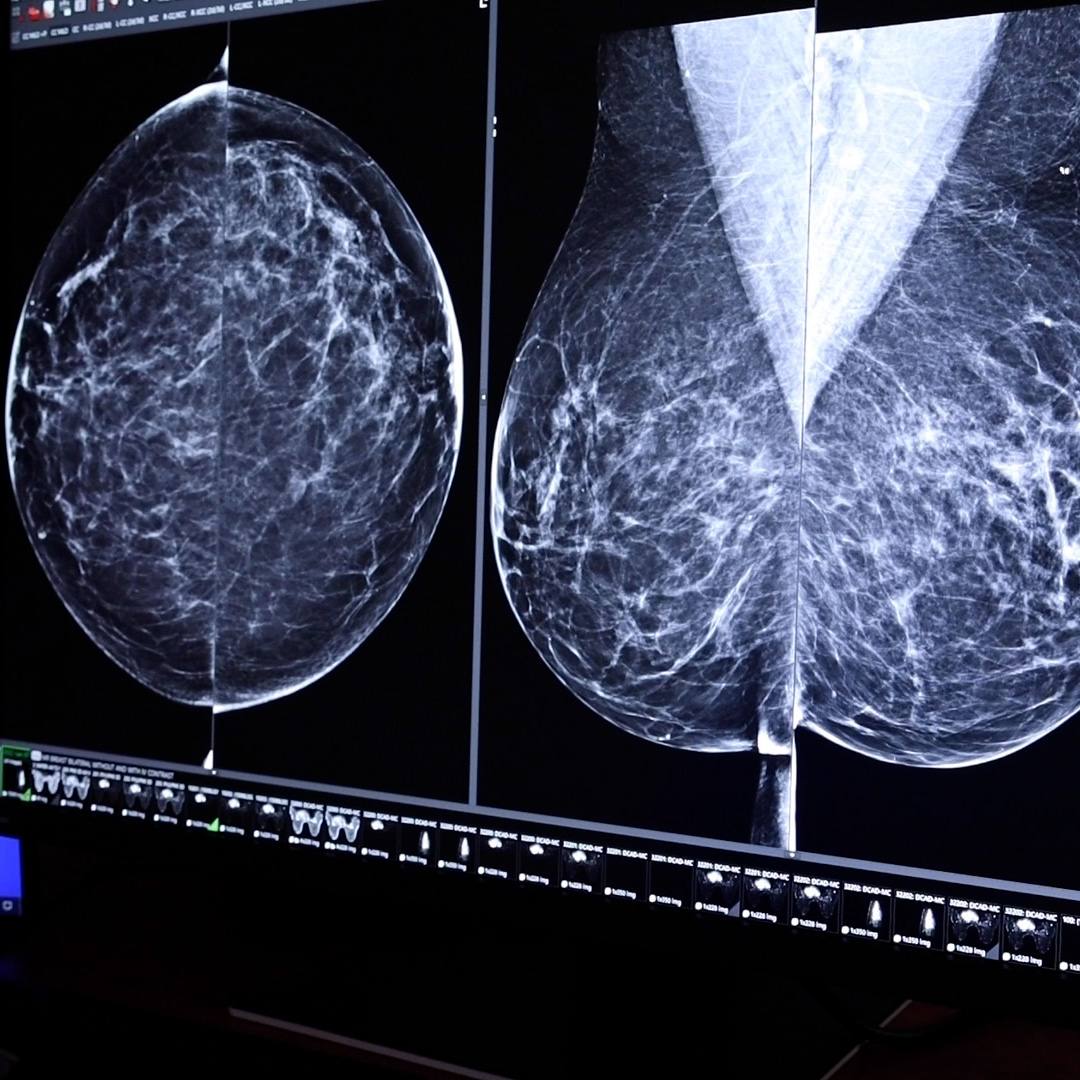 CHICAGO — Molecular sequencing could identify ovarian cancer patients who are most likely to benefit from treatment with bevacizumab (Avastin), a Mayo Clinic-led study has found. Results of the research were presented today at the 2014 American Society of Clinical Oncology Annual Meeting.
CHICAGO — Molecular sequencing could identify ovarian cancer patients who are most likely to benefit from treatment with bevacizumab (Avastin), a Mayo Clinic-led study has found. Results of the research were presented today at the 2014 American Society of Clinical Oncology Annual Meeting.
The addition of bevacizumab to standard therapy extended progression-free survival more for ovarian cancer patients with molecular subtypes labeled as “proliferative” or “mesenchymal” compared to those with subtypes labeled as “immunoreactive” or “differentiated,” says Sean Dowdy, M.D., a Mayo Clinic gynecologic oncologist and senior author of the study. “Though our study is very preliminary, it does suggest that we are getting close to the point where we could use sequencing data to choose more effective and less toxic therapies for patients.”
Dr. Dowdy says the U.S. spends about $3 billion a year on bevacizumab for cancer treatment. “Unfortunately, two-thirds of those patients don’t respond to the drug, which means we are just giving them toxicity with no benefit. This expression data will help us choose which patients should receive this drug.”
Bevacizumab is an angiogenesis inhibitor, a drug that slows the growth of new blood vessels that help cancers grow and spread. An international phase 3 clinical trial known as ICON7 has recently shown that adding this drug to the first-line chemotherapy drugs carboplatin and paclitaxel can improve progression-free survival of ovarian cancer patients.
Dr. Dowdy and his colleagues wanted to determine if the response to this new treatment could be predicted by looking at the molecular makeup of ovarian tumors. First, the researchers used gene expression arrays to analyze biopsies preserved in paraffin-embedded tissue blocks from ICON7 patients.
Then, they used the molecular classification already established by the National Cancer Institute’s Cancer Genome Atlas (TCGA) project to separate the patients into four subtypes of the disease, based on precise patterns of genes that had been turned “on” or “off” in their tumors. Of the 359 patients studied, 20 percent had the differentiated subtype, 34 percent had the immunoreactive subtype, 19 percent had the mesenchymal subtype, and 27 percent had the proliferative subtype.
Finally, Dr. Dowdy and his colleagues looked for an association between these molecular subtypes and responses to treatment. They found that patients with the proliferative and mesenchymal subtypes fared the best, with 10.1-and 8.1-month improvements in progression-free survival after treatment with bevacizumab, respectively. In comparison, patients with the immunoreactive and differentiated subtypes only experienced an improvement of 3.8 and 3.7 months, respectively. Similar differences were seen between subtypes when the investigators looked at another measure of treatment response, overall survival.
“It makes sense that patients with proliferative and mesenchymal subtypes would respond the most favorably to bevacizumab, because the same genes and molecular pathways that are implicated in those subtypes are also the ones affected by the drug,” says Dr. Dowdy.
Once the rest of the data from the ICON7 trial are published, Dr. Dowdy and his colleagues plan to reanalyze their results to see if even stronger associations can be found between subtypes and outcomes.
They also hope to validate their results in another set of patients, a necessary step before molecular sequencing can identify the patients most likely to respond to this particular drug.
“Right now bevacizumab is not universally used in the first-line treatment of ovarian cancer in the United States because it gives marginal improvement in survival, is extremely expensive at about $100,000 per year, and may have toxic side effects,” says Dr. Dowdy. “But if we could identify those patients who will see a 10-month improvement in progression-free survival, it would be worth treating them with the drug. On the other hand, avoiding the use of bevacizumab in patients unlikely to respond will allow us to reduce unnecessary toxicity and prescribe other, potentially more effective drugs for that particular patient.”
Co-authors include Boris Winterhoff, M.D., Ann Oberg, Ph.D. ,Chen Wang, Ph.D., Shaun Riska, Viji Shridhar, Ph.D., Ellen Goode, Ph.D., and Lynn Hartmann, M.D., all of Mayo Clinic; and S. Kommoss, University of Tübingen, Germany, G.E. Konecny, University of California Los Angeles, J. Fan,Illumina Inc., F. Kommoss,Institute of Pathology, Mannheim, Germany, A. du Bois, Arbeitsgemeinschaft für Gynäkologische Onkologie, Germany,F. Hilpert, Arbeitsgemeinschaft für Gynäkologische Onkologie, Germany,J. Chien, University of Kansas Cancer Center, A.C. Embleton, University College London, U.K., M. Parmar, University College London, U.K., R. Kaplan, University College London, U.K., T. Perren, University of Leeds, U.K. and J. Pfisterer, Arbeitsgemeinschaft für Gynäkologische Onkologie, Germany.
The Mayo Clinic SPORE in ovarian cancer and the Mayo Clinic Cancer Center funded the study.
About Mayo Clinic Cancer Center
As a leading institution funded by the National Cancer Institute, Mayo Clinic Cancer Center conducts basic, clinical and population science research, translating discoveries into improved methods for prevention, diagnosis, prognosis and therapy. For information on cancer clinical trials, call 507-538-7623.
###
About Mayo Clinic
Recognizing 150 years of serving humanity in 2014, Mayo Clinic is a nonprofit worldwide leader in medical care, research and education for people from all walks of life. For more information, visit 150 years.mayoclinic.org, http://www.mayoclinic.org/ and newsnetwork.mayoclinic.org.
MEDIA CONTACT:
Joe Dangor, Mayo Clinic Public Affairs, 507-284-5005, newsbureau@mayo.edu








